Maybe canceled
Maybe more collective than you think
Maybe unwell or anxious
Maybe ultra professional
Maybe for the camera
Maybe pulling or being pulled along
Maybe being imposed upon
© Dominique T. Skoltz
k. g. GuttmanMaybe canceled
Maybe more collective than you think
Maybe unwell or anxious
Maybe ultra professional
Maybe for the camera
Maybe pulling or being pulled along
Maybe being imposed upon
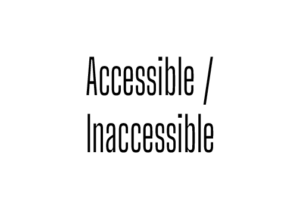

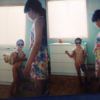
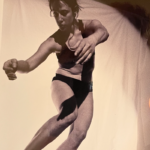
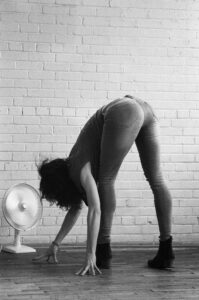
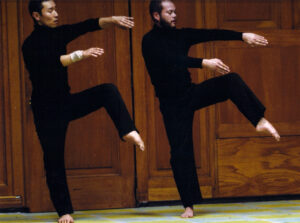

How the image invites us to move
Les Trous dans les yeux is a collective practice combining still archival images and live performance.
I asked of myself and of the performers to dip into their personal archives and share a few photos of childhood and a few professional photos of their dancing careers. I wanted to probe our memories of small and big details, far and near in time, personal and professional.
I then proposed a dance practice and a greenscreen scenography to explore the images in story and movement.
Each day in the studio, one of us would describe and tell a story of an image. We would ask questions; probing the different angles and edges of the story. As a group we did not see the image itself, but through the dance practice the photo would sometimes be revealed, somewhat revealed, or not at all.
The dance practice was not an aim of re-enactment, or a telling of a story we already knew, but practicing the potential of seemingly minor moments of our past selves. Our aim became feeling and moving with the unfinished nature of these images.

In photo: Angie Cheng and her friend
circa 1984
Unknown photographer
Location: School yard, Chinatown Ottawa
In photo: Paul Chambers
circa 1990
Name of photographer: probably his mother
Location: Saint-Henri, Montreal
In photo: k.g. Guttman
circa 2001
Name of photographer: Tony Chong
Location: Ottawa Arts Court, Le Groupe Dance Lab
In photo: Marie Claire Forté
Choreography: Marie Claire Forté
2014
Name of photographer: Alanna Kraaijeveld
Location: Circuit-Est, Studio C, Montreal
In photo: Koichi Yano and Rob Abubo
Choreography by Tony Chong
circa 2003
Name of Photographer: Lisa Hébert
Location: Ottawa Arts Court, Le Groupe Dance Lab
In photo: Ivanie Aubin-Malo and her cousin
circa 1996-1997
Name of photographer: probably Johanne Aubin
Location: Ville de St-Hubert, QC
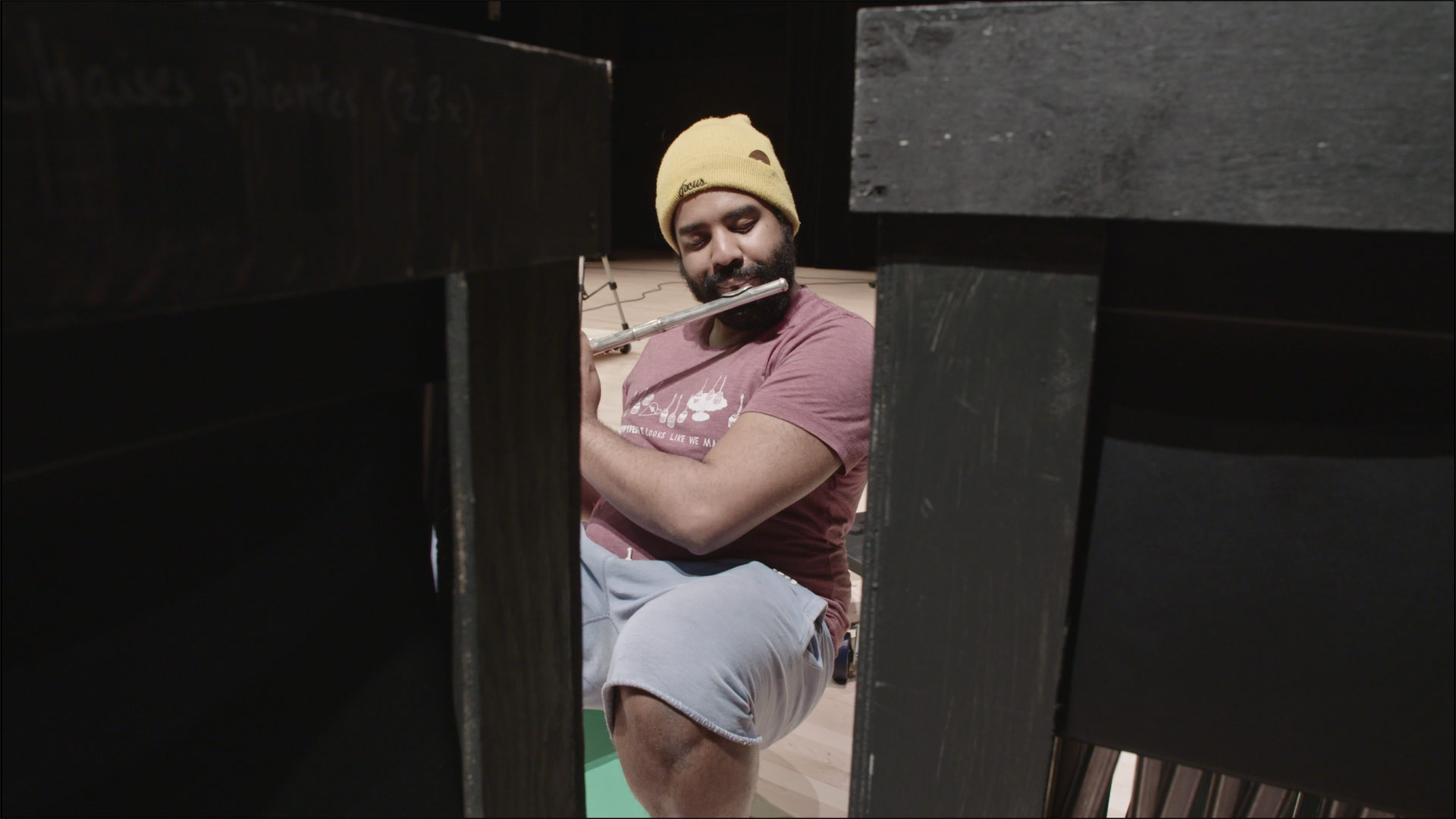
Discussion, Last day of residency, January 29, 2021
Espace Bleu, Agora de la danse
Ivanie There is something that hasn’t settled. The storyteller does not have the full freedom to tell all. We have to be sensitive how we tell our stories and where it might lead others in their own stories. I had this experience with Marie Claire, her testimony brought me into my own stories. Paul had a similar experience with Rob’s story.
Paul In that moment [ after Rob’s story] I didn’t have a question, but wanted to engage in a conversation, but we hadn’t made a space for that. I think the six of us could take about anything for hours. How to make sure we could move altogether after that ? And I felt all alone. I sat and stared at the screen, taking the time to process through the work. It was a feeling that the conversation around the story wasn’t possible, which happens all the time in life.
k.g. It’s not just the photo that gives off content, but the whole situation. I didn’t give the story much weight at the beginning. As we went along, we took the time, we added the questions: it takes a lot of technique and care to tell a story. I underestimated those ways of working at first.
Paul The practice has changed since the beginning. When we came in, it was more focused on echoing each other’s actions. And we were all working on that initial proposal. Going in, you didn’t get as much from the story as I do now. And I don’t know if that’s because we are making… the story becoming more relevant in response to what we were doing.
Rob I disagree with Paul. For me, I am being fed by so many other things than what we are saying, including all the things we have said in days past. I am able to access so much more than the twenty minute story as something to source from when it’s my turn to go in.
We have collective knowledge of unsaid parts of the story because we have heard another version t before.
Angie The story, this has come up before, is it too complete? While listening to the story I take it in , but I don’t try to hold the whole thing or anything too tightly.
I observe myself watching. I making choices to look elsewhere, not where the action is, why is that? Because I am not being so attached to things, or to the story…
I’m not defining it too hard, not flattening the image, the storytelling is expanding outside of the frame, it’s not fixed nor flat, it has all these textures. If the image/story is too present in our choices, or if we are trying too hard to communicate the image/story, it becomes too defined, too clear of a picture.
Rob The reality of not being able to hug each other, or just come up and start working on your legs as we warm up. This touchy normal we used to have has been stifled…but we are kind of used to it now. Touch would be a way of dealing with what we are dealing with in the room. Personal subject matter, I would want to hug someone after, that emotional way of supporting, not just support that person with my dancing.
Marie Claire I love dancing in all the ways. I love touching and listening and feeling. The studio is ever more sacred, and I was feeling this way before the pandemic.

To work with archives is to lean into a non-linear time, to understand images as forces, personal and historical, to be in relation.
This project takes place on un-ceded Indigenous lands, lands and waters of which the Kanien’kehá:ka are recognized as the traditional custodians. The project takes place during a worldwide pandemic and within a political context of systemic racism.
The consciousness of this complexity, and of my position as a settler-guest-dancer, informs how I choreograph and dance. My autobiography and agency is caught up with greater socio-political forces. I am a white settler artist, and I have invited both white artists, indigenous, and artists of color into my process. This invitation to others is a demand for care and an accounting for relations, vulnerabilities, and differences, an engagement to not deny we are dancing with historical traces on our backs.
This project is not a demand to divulge one’s personal experience in order to become transparent or knowable, or in order to tell a clearly defined story—but to make an attempt, through memory, vibration, and movement, to discover intimacies in unexpected ways.
I view Les trous dans les yeux as a decolonial engagement in contemporary dance; a practice that understands that situating identity/ autobiography are the first necessary steps to account for one’s location and capacities, in order to imagine new forms of relations.
It is a dance practice that invites storytelling, remembering, and listening into the black box theatre and into the performer’s bodies, in order to take on the not so simple documentary and speculative beauty of dancing

The work is me, us, the team, our past(s), memories, fictions…
I am a boy from Winnipeg, with siblings, dead, alive. a naked child, at first, then another, with a friend in Ottawa. I lived there off Somerset when I worked at le Groupe, before cell phones. Clark (who filmed all this) was waiting in the apartment.
As one of many, I’m willing to walk someone to the edge, but discovered that hosting a group onto the precipice is uncomfortable for many.
I love my friend, who has a nickname. She’s really funny, and has been photo documenting the career.
As a child I didn’t choose what instrument to play, my parents did.
I am carried by everyone, known to me, and unknown.
I seriously don’t mean to break shit, maybe I’m just super strong?
I like that I have a special photo/souvenir/memory of that time in Ottawa. My arms look longer than in real life: perspective.
People hear my story and think I’ve had it hard, but the opposite is true: we’re still here, and I’m better from being part of this team.
truly, ROBERT ABUBO
Angie Cheng is a Montreal-based dance artist. Collaborative creation processes ground her ongoing research in performance; investigating the liminal space between creative process and performance event, between spectator and performer. The embodied and specific understandings that arise from these investigations shape her current questions and engagements both in her own work and with others.
Trust in the story, trust in the work. We are all listening to it together. That is all that it needs to do.
As much as I am making decisions I am following and observing in real time, I try not to hold onto any previous predicting or planning as it can feel too defined.
I stay in those moments with the immediate tasks that I am doing till they are done.
Allowing space for the observers to see/connect through their lens.
Trust in the story.
We are all listening to it together.
Nil nteliwis Ivanie, my name is Ivanie.
I never thought that my solo at Short and Sweet in January 2016 would start a creative cycle with k.g. and Marie-Claire. I didn’t realize the moment at the Agora bar on rue Cherrier singing “Robabubo” with Rob and Stacey, nor the opening night of the Fringe at Summerhall with Paul and Angie, would also be a continuation of this cycle.
I enjoy throwing myself into life and be surprised by its movements and encounters. These flashes of life, that have not been captured by devices, exist substantially in my visual and sensory memory.
We all gathered in the studio, January 2021.
Two key forces for me: rhythm, emotion.
Emotion is closely linked to the rhythm and the intensity of the moment.
The gestures that accompany the story told affect me.
I am the youngest of the group, so the temporal distance between the images and my present is less stretched than others. Surely a force to consider?
A choreographer and researcher, a dancer, a single mother, a bit tree-like, a host, a guest, a settler scholar, who thinks about relational forces moving through her.
As soon as we arrived in l’Espace Bleu, on January 6th,2021, the announcement arrived in Montreal for the curfew and the re-confinement, and the violent insurrection south of the border. How to work on becoming super sensitive to others, in the midst of COVID’s threat.
How Not to capture, contain or hold on too tightly to predefined things.
To work with, as Julietta Singh says, “the body as an infinite collection of bodyings.”
Paul graduated from John Abbott College in the Professional Theatre Program, specialization in Design in 2005. From 2008 until 2013 Paul is Technical Director at Tangente: a contemporary dance presenter in Montreal. In his five year tenure he coached 16 emerging technicians and began collaborating as a designer on numerous dance productions.
In 2013 along with fellow designer & educator David-Alexandre Chabot, they inaugurate CHA a design collective aimed at creating & sharing design based works with artists across different disciplines. What unifies CHA’s body of work is the way that it communicates with people, each production challenging the audience to place itself at the center of the proposition and to experience it from within. Paul is continually studying and exploring in the visual arts, where he blends his passion for lighting with in-situ & gallery based installations.
I am Marie Claire Forté, a white and cisgender woman. I live in Tiohtià:ke/Montréal, where I was born (but not where I grew up). I dance, choreograph, write, translate and teach. I am the mother of Imogen Keith, three years old, and her presence among us is force that courses through me daily. With her, I bathe in love, listening, observation, wonder, discovery and creativity, as much as vulnerability, care, community, attachment, autonomy and emotions (rage, among others). I am inspired by the relational, experiential and experimental potential of dance. My family and community support my artistic practice. Artists and thinkers who inspire me, in random order (and I am certainly forgetting some): Laurie Anderson, Alice Munro, Adrian Piper, Maggie Nelson, Rosanna Deerchild, Tracey Clayton, Heben Nigatu, Brittany Luse, Eric Eddings and Roxane Gay (whom I have never met); Susan Macpherson, Peter Boneham, k.g. Guttman, Sophie Bélair Clément, Alanna Kraaijeveld, Louise Bédard, Catherine Lalonde and Sylvie Lachance. Recently, Rob Abubo introduced me to Erykah Badu’s album But You Can’t Use My Phone (2015) and it reminded me of how much music is a sustaining force for me. Light is another important one
Les trous dans la yeux has received the support of the Conseil des arts et des lettres du Québec and the Canada Council for the Arts